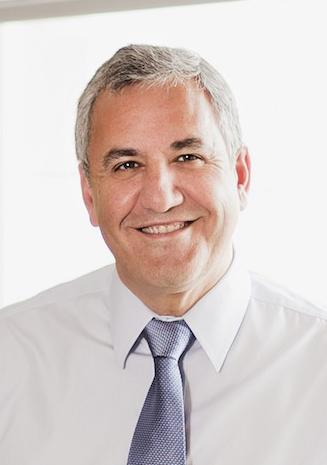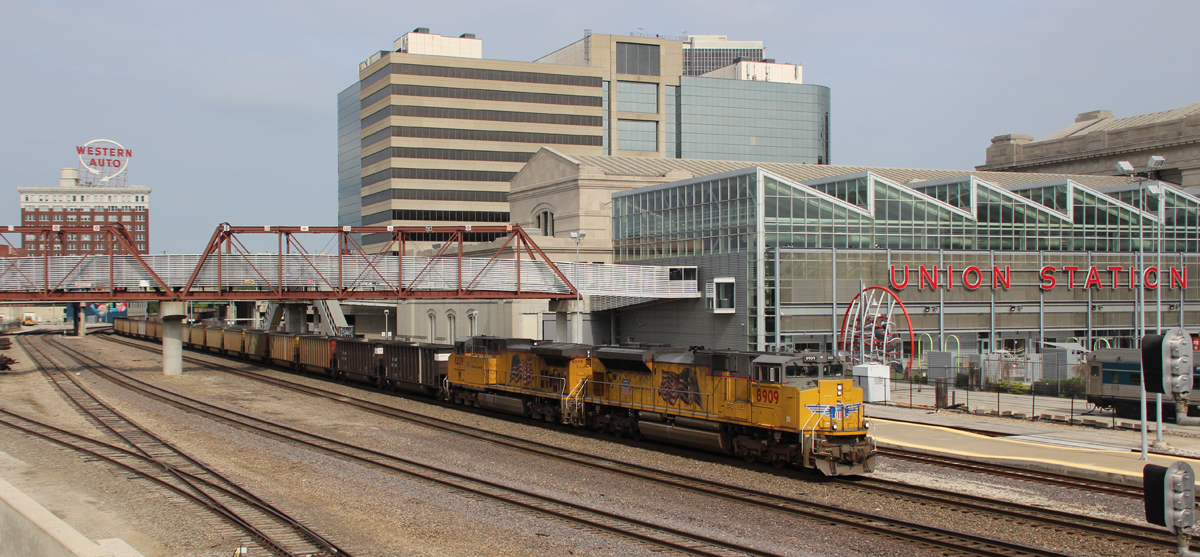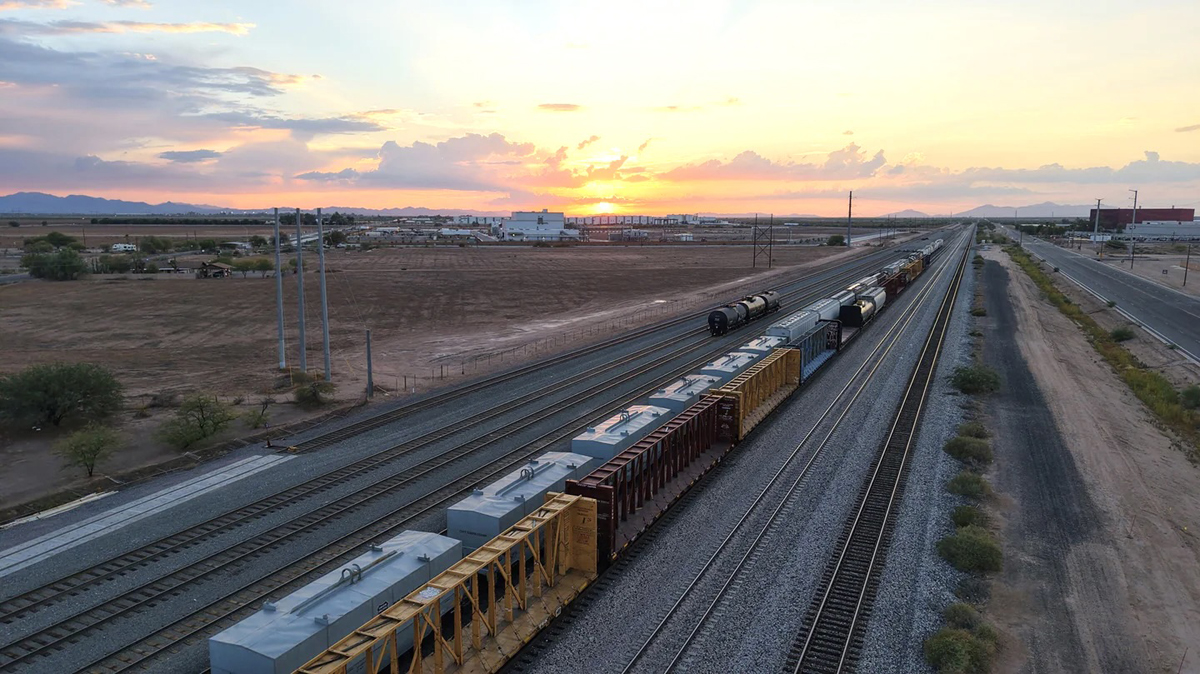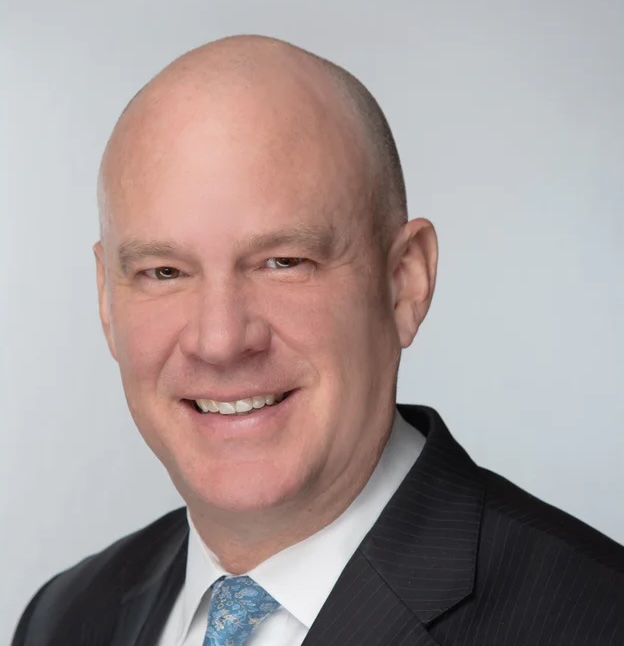No, that’s not how much Vena will earn as the railroad’s new chief operating officer. Under the terms of his contract, he’ll earn a base salary of $600,000 and will be eligible for an annual cash bonus of up to $750,000.
But $9 billion is the value created by the jump in UP’s stock price since Vena, a former Canadian National executive and E. Hunter Harrison protege, was named to lead UP’s operations and its shift to Precision Scheduled Railroading.
UP’s stock closed on Monday at $138.65 per share. After UP’s late Monday announcement that Vena would become UP’s chief operating officer on Jan. 14, the railroad’s stock shot up more than 6.5 percent in after-market trading. And it stood at $150.76 per share when the market closed on Tuesday, a gain of 8.7 percent.
The rise was UP’s biggest single-day move since 2009 — and is evidence that investors gained a jolt of confidence from having a veteran of Harrison’s operating model in charge of UP’s transition to an operating plan based on the principles of Precision Scheduled Railroading.
Several Wall Street analysts said the hiring of a PSR veteran would help UP avoid service disruptions and accelerate changes it began on Oct. 1 with its switch to the new Unified Plan 2020.
“We were previously skeptical on UNP’s likelihood of successfully implementing PSR and key to that skepticism was the absence of a C-suite manager with PSR experience,” wrote RBC Capital Markets analyst Walter Spracklin. “With a seasoned PSR veteran now in the COO role, we expect dramatic changes will occur at UNP.”
“This marks yet another milestone in the PSR chronicles at UNP, and puts the company one step closer to full network implementation by mid-2019 — which is now clearly visible,” Credit Suisse analyst Allison Landry said in a note. “We think execution risk is diminished.”
UP was already ahead of schedule with rolling out its new operating plan, which is in place on its Mid-America Corridor linking the Midwest and Chicago with the Gulf Coast and Mexico. UP is currently changing the train plan on its routes linking Southern California with Texas and Chicago. The third and final phase will cover routes in the Pacific Northwest.
“Operational improvements could materialize faster under Vena’s leadership as he brings to bear his extensive experience in PSR,” BMO Capital Markets analyst Fadi Chamoun said in a note.
The bump in UP’s stock price was reminiscent of what happened at CSX Transportation in January 2017, when Harrison left the helm of Canadian Pacific five months early. When news surfaced that Harrison and his hedge fund partner were targeting a management shakeup at CSX, the railroad’s stock price soared 23 percent.















Wow, does anyone grasp the concept that perhaps some carriers are a bit over staffed and over equipped? regardless as to whether or not you like the capitalist system here in the US. The Company owes it’s major responsibilities to the share holder (many of whom happen to be rank and file employees.
To be up front here, I always didn’t agree with every tactic and fallout from EHH’s PSR. But there were many aspects which were definitely needed. That is why CN is as healthy as it is today.
I happen to know Jim Vena, he is quite the straight shooter and one heck of an operating expert. Quite frankly, the carriers facing PSR, are more than likely in need of some swift kicks in the backside. Jim, will be up front and direct with how he handles the whole deal at UP.
These companies are in business to provide service and to make a profit. They are not rolling anachronisms, existing to be Museum Pieces on this planet’s surface.
Let the slash-and-burn begin!
Hopefully Matt Rose is right and the so-called PSR results in “Persistent State Regulation” of railroads. The public and customers need it now, as bad as we needed it 140 years ago.
Any industry that intentionally drives away customers and incurs long term debt to finance share buy-backs instead of funding capacity and reliability has wrong priorities.
So, Matt Rose was prescient in his observations regarding Wall Street.
I’ve asked before and I will ask again. If the industry is pillaging the ranks for former CN people to run their shows, does this mean that the executives in charge now at the different railroads have been rewarded with bonuses over the years for inefficiency?
John Green,
I can correlate what you’re saying to a gaming term: “there’s no such thing as overkill”, and that actually could apply to any business that is involved in Customer Service. If you don’t grasp the concept, it’s simple, there is no such thing has having to much when it comes to serving customers(just look at all the department stores with bad customer service ratings, it’s usually because they have no staff around to help).
I will continue to argue with folks who claim a companies major responsibility is to its shareholders. You can line up all the investment money you want but, without a customer base, you’ve got zip – literally. Your investors just dumped a bunch of money down a black hole.
Matt talks about a social responsibility and I believe he is spot on. Companies should exist to provide a service customers want / need; employment to people in communities where the company dwells; and a reasonable rate of return to the shareholders. It’s a three legged stool and, without one of those legs, your ass is sitting on the floor.
Certainly the railroads are in business to make a profit. But the common carriers are unlike most businesses in that they have been given unusual additional powers in recognition of the public service they were expected to provide. Your typical business has no ability to use appropriation if it needs more land, and is subject to all the whims and bylaws of the local jurisdiction(s). The railroad can ignore the village of Punkeydoodle Corners when it tries to impose a speed limit of 5mph through town and ban tank car traffic.
Being a common carrier provides the railroads with a very privileged position. With that privilege should come the responsibility to continue to remain a common carrier. It may require more work to serve the little customer compared with a unit train shipper, but on the other hand they tend to pay a much higher rate as a result.
Certainly the company has a major responsibility to its shareholders; being successful in that respect allows it to continue providing the public service that is its second major responsibility. Unfortunately we have seen some recent failures in performing that second part.
Matt Rose’s “I told you so” will come when too many “lumpy” shippers and receivers find themselves “demarketed” and angry.
The basic philosophy of PSR is to turn the RR into a conveyor belt with no thin spots or spillage. You build an efficient operating plan and then cut and paste the traffic to fit. The goal is to make the RR as efficient as it can possibly be RIGHT NOW.
The basic philosophy of BNSF is to take what traffic is offered and built the most efficient, scheduled plan around that. The goal is to move all the traffic that’s tendered and make as much as you can doing it.
PSR has trouble when the status quo changes quickly. There is no extra capacity in the system anywhere. No extra locos, crew, main tracks, yards. Nothing. So, as long as operations stay out of the ditch and there are no big changes like a spike in oil trains or bumper grain harvest, things are great.
The BNSF way, implicitly has some slop in and can react by adjusting the plan with bolder strokes to accommodate changes. It won’t make you as much money today, but you are less likely to drown tomorrow.
When NS and UP talk about PSR and even what CSX did, you’re not really talking about the “scheduling” of traffic which was the “guts” of what EHH did at IC and CN. Everyone has been doing this for quite a while. You are actually talking about doing the second layer of action. Combining train types, lengthening trains, balancing train flow, blocking optimization, reducing day of the week variability, etc. The long term wisdom of these things is still debatable.
Should I take a twice a week unit train and try to fold that traffic into my daily merchandise service at 40 cars a day? Do I have my inbound yard crew pre-block the traffic they pick up so I can do a block swap or two instead of humping it all en route? Do I “force” receivers to give me cars on Sat and Sun rather than wait until Monday to smooth out my flow? This is the stuff of “PSR” these days.
What RRs are REALLY BAD at is determining how much reserve resources (crew, loco, yard track, main track) you need to have to get over the bumps, bruises and unexpected traffic without throwing the RR in the ditch.